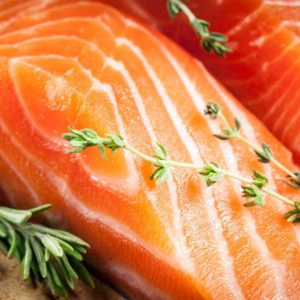
You may have seen packages at the grocery store touting ‘Contains Omega-3 Fatty Acids,’ but what does this mean and why does it matter?
In Parents: Facing Fat Facts and The Truth About Trans Fat, we went over the details of other types of fats. Now the spotlight is on omega-3 fats – a subcategory of polyunsaturated fats. Let’s explore what omega-3 fatty acids are and the important roles they play in our bodies. Don’t miss the tasty, omega-3 filled recipes at the end!
What are Omega-3s?
Omega-3s are a family of healthy fats that our bodies cannot make on their own. These fats are known as essential fatty acids. This means we must eat enough omega-3 rich foods or take supplements to make sure we have enough omega-3s for the important roles they play in our bodies.
Why do we need omega-3s?
We need them for key functions, like keeping our hearts working properly, keeping our genes error-free, and optimizing peak brain function. They also aid neurotransmitters which are your brain’s messengers! Learn more about why we should care about omega-3’s here.
What are the different types of omega-3s?
In the omega-3 family, there are three “siblings,” whose three-letter names you may recognize from ads on cereal boxes, orange juice, baby formula, or vitamin supplements. The three types are ALA, EPA, and DHA. Here’s what you should know about each one:
- ALA (alpha-linolenic acid): The bossy big sister, ALA is in a variety of commonly eaten foods, like vegetable oils (canola and soybean), walnuts, and flaxseeds. The average American diet tends to be low overall in omega-3s, with the most omega-3s from the diet coming from ALA. ALA can be converted in the body into EPA and DHA, but this conversion is not very efficient.
- EPA (eicosapentaenoic acid) and DHA (docosahexaenoic acid): The shy and often overlooked twins of the omega-3 family, EPA and DHA are something of a dynamic duo and are usually measured together because their benefits are not well understood apart. These two important fatty acids are found in their pure form primarily in cold-water fish, fish oil supplements, and certain algal extracts. They are a lot easier for the body to use than ALA. EPA and DHA are being studied to determine their potential use in a variety of settings for both children and adults.
Omega-3 Recipes and Ideas
Eating omega-3s doesn’t have to be a chore! Instead, it can be fun and delicious! Here are some tasty ways to get in your omega-3s:
Recipes:
- Fish and tofu soup
- Homemade sushi
- Salmon or tuna salad
- Whole wheat tuna casserole
- Baked salmon and broccoli
- Cocoa chia seed pudding
- Purple power smoothie bowl
- Gluten-free banana oat walnuts
More Ideas:
- Snack on walnuts or add them into trail-mix
- Sprinkle chia seeds or ground flaxseed into oatmeal or add to smoothies
- Soak chia seeds in a glass of water to make an interesting, gelatinous beverage
- Substitute ground flaxseed or chia seeds in baked goods in place of the egg
- Use walnut or flaxseed oil in your homemade salad dressings
Special Considerations
- Are you vegan, vegetarian, or not a fan of fish? If you don’t eat fish regularly, talk with your doctor to find out if taking omega-3 supplements would be beneficial for you. Note that omega-3 supplements can interfere with certain medications.
- Pregnant or breastfeeding? Learn about safe seafood options here.
Want to learn more about omega-3s? My books take a deeper dive into everything omega-3! My sports nutrition book dives further into omega-3s. It includes the recommended amounts per day for adults and other foods that contain them. Plus, my cookbook has recipes rich in omega-3s and has the exact amounts included in the nutrition analysis for each recipe.












